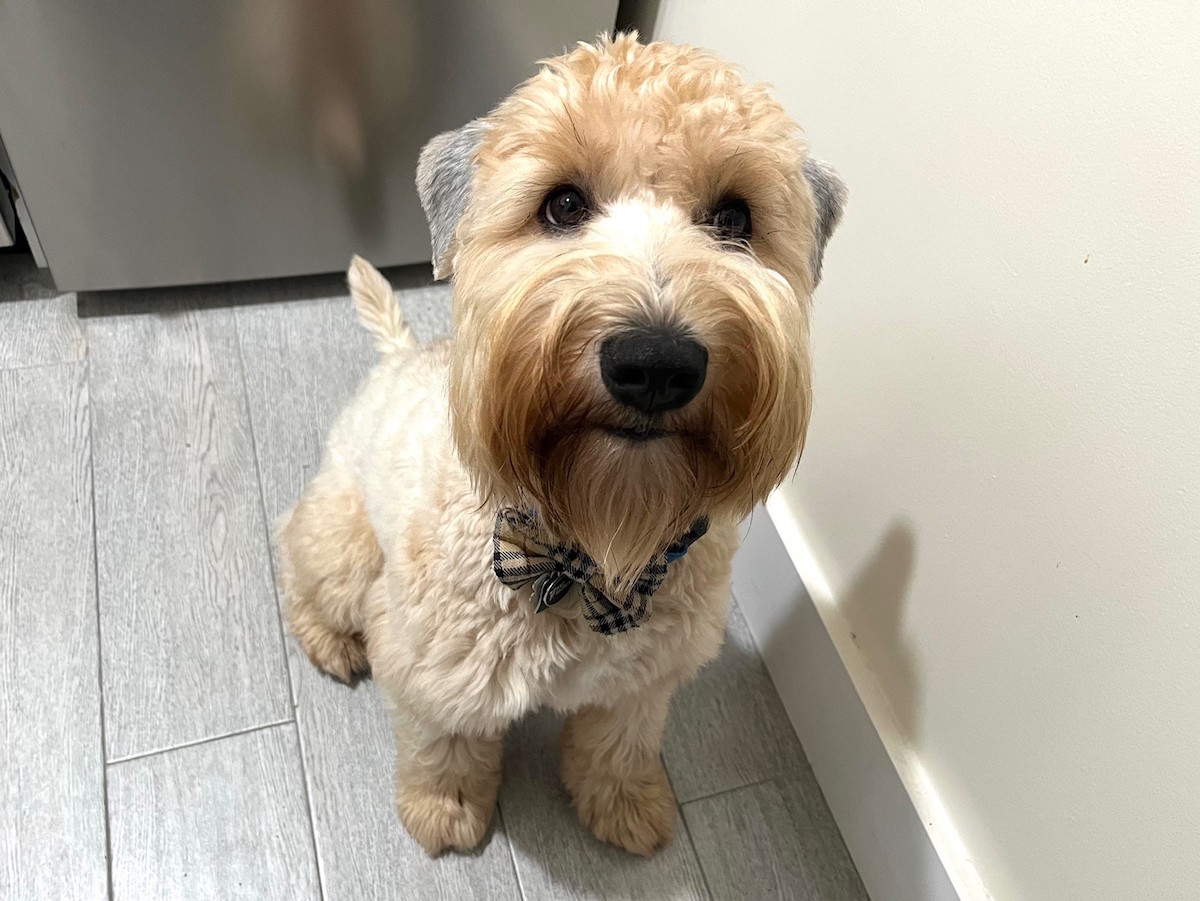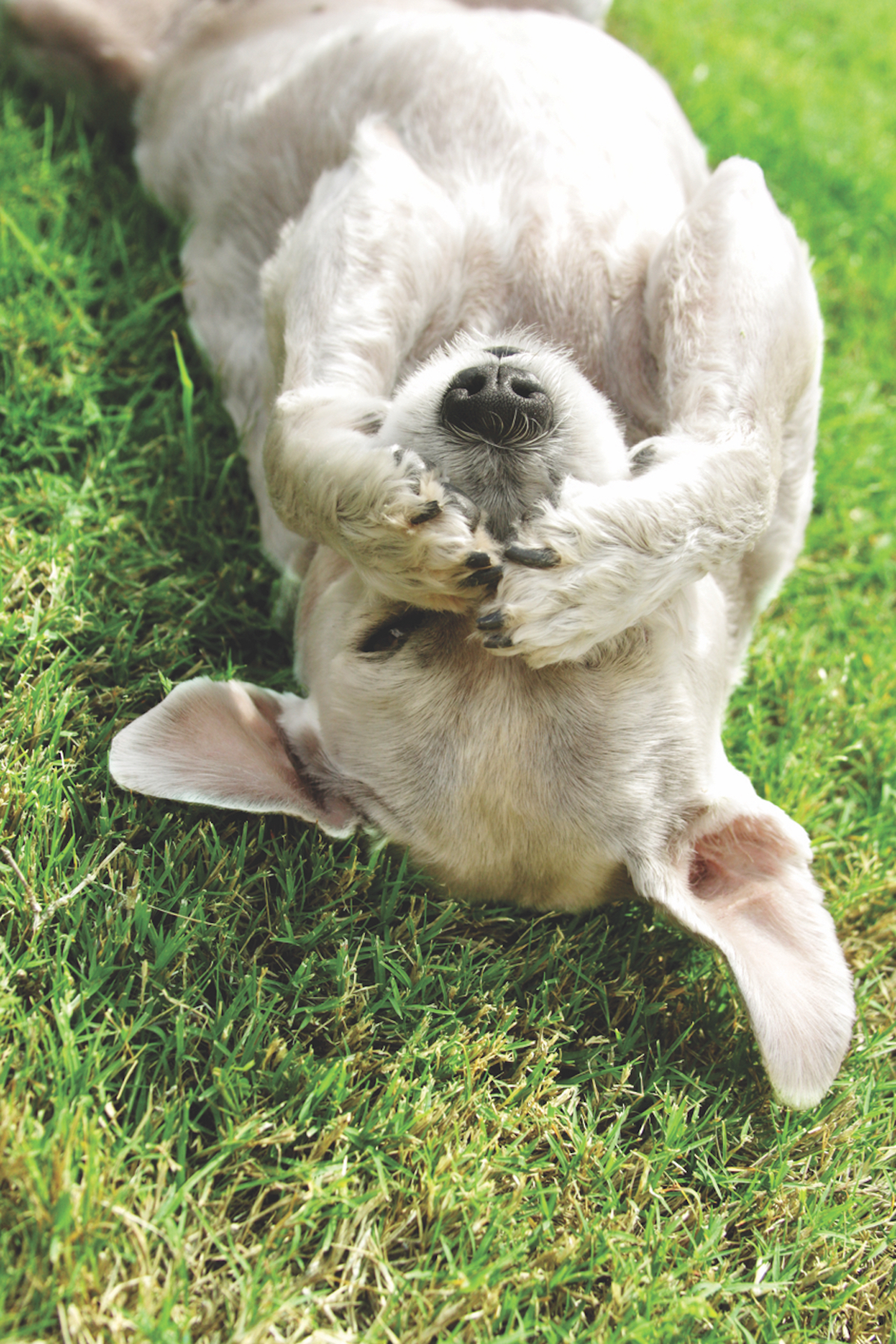By Tracie Korol
The good news is that dogs don’t get cavities. The bad news is that they get just about every other dental problem that plagues humans. As with people, dental disease is the leading cause of chronic inflammation and infection in dogs.
Just like us, dogs develop plaque and tartar. Plaque is a colorless biofilm, mainly Streptococcus mutans, that builds up on a dog’s teeth over time. If the plaque isn’t removed from the surface of a dog’s teeth, it mineralizes into tartar. Tartar is caused by the continual accumulation of minerals from saliva on the plaque. It’s that orange/tan/brown crusty looking stuff that cakes at the top of the tooth. Eventually, tartar deposits will destroy the dog’s gum line. Once the gum line has been destroyed it’s a short hop to extreme dog dental care —extractions and/or root canal treatment.
While some dogs will have sparkling white teeth throughout their lifetimes with absolutely no thought or effort required from their owners, more than 80% of our pets develop gum disease by the age of three years, according to the American Veterinary Dental Society. With that statistic in mind, most of us should be attending to our dogs’ teeth regularly to prevent accumulation of tartar that precipitates gum disease.
As a proponent of clean feeding for my dogs, I believe that the mechanical action of chewing real food and raw bones linked with the superior nutrition helps maintain healthy teeth and gums. Luckily, for dogs fed commercially prepared diets, there are kibbles specifically designed toward reducing plaque build-up. The mechanism of action for these dental foods is based on either enhanced kibble texture (bigger, fiber-y, harder bits) that scrape the teeth, or chemically coating the food with polyphosphate, or both. The polyphosphate coating binds minerals in the saliva to make them unavailable for tartar development. Polyphosphates can, according to the Veterinary Oral Health Council, reduce accumulation above the gum line by as much as 58%. The trick in dog dental care, much as it is with humans, is avoiding plaque and tartar below the gum line.
Daily brushing of your dog’s teeth is the recommended practice. Granted, brushing is no fun, for you or your dog. To confess, I never did get the hang of manipulating a doggie toothbrush plus, my dogs hated it and me after each session. I was somewhat forced to return to the gauze ‘n’ finger as my guys would mysteriously vaporize when I even approached the dental equipment cupboard. To keep the peace, I found it easier and more efficient to buff their teeth with a bit of gauze over the end of a finger. Because they regularly enjoyed raw meaty bones their teeth didn’t need as much intrusive attention and in time, they began to appreciate the special attention.
Be patient when starting oral home care, especially in older animals. Starting with pups as soon as they begin to get teeth is the best scenario. Begin with a gauze wrapped finger, or a finger toothbrush (which is exactly that) and graduate to a soft child’s toothbrush or spring for a specially designed, long-handled “pet” toothbrush, if sticking your finger in the back of your dog’s mouth grosses you out. For the introduction to dental care it is perfectly all right to cheat a little. A little garlic powder on a wet toothbrush is a great motivator. It also helps, at the beginning, to be less goal oriented. Allowing a pup to chew at a garlic-y brush is a great way to set up a situation where having a scrubby thing in the mouth is a good experience. Avoid forceful restraint — pinning your dog in a headlock — rather, make it a bonding experience and always praise and reward your pet for its cooperation. Toothpaste is simply a flavoring to enhance the acceptance of having a brush in the mouth at all; it’s the mechanical action of rubbing that removes the plaque. We don’t use people toothpaste because of the fluoride. People can spit it out, dogs can’t.
Recently, on the market, are a variety of spray or gels that stimulate enzymes in the saliva preventing plaque build-up. They can be used with a toothbrush, applied with a finger, sprayed onto the tooth surface and some are added to a dog’s drinking water. When these first appeared, I thought they were too good to be true. But they do work.
Toothaches hurt dogs just as they hurt us. You wouldn’t want to spend day after day with a toothache or other dental problem and neither does your dog. Dog dental care can be simple and inexpensive if you take the time to monitor your dog’s teeth and ensure you address dental problems before they can become serious. Taking care of your dog’s dental needs will help ensure your dog will be around to spend many happy years with you.
Latest from Pets
Concert event supports Palmetto Animal League From staff reports Mingle with some of the Lowcountry’s cutest
From staff reports Where can you splurge on yourself while saving lives? Palmetto Animal League’s annual
From staff reports Kitten Yoga is coming to Effervescence YogaSpa, and will serve as the first
By Paul Hyde On the eighth day, after taking a day off, God realized human beings
Christmas has passed, but New Year celebrations, Hannukah and Kwanza are in full swing. Celebrants all over






